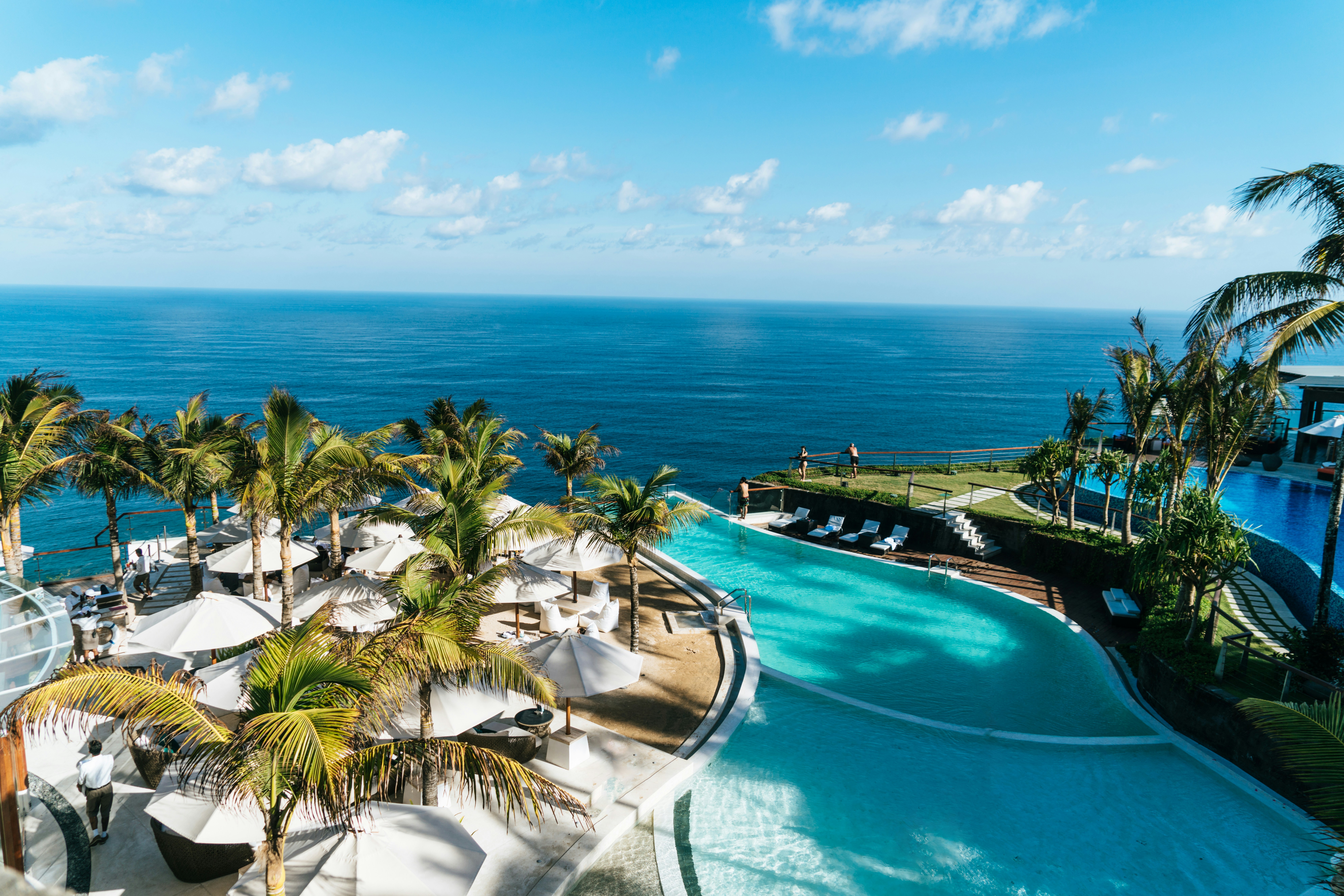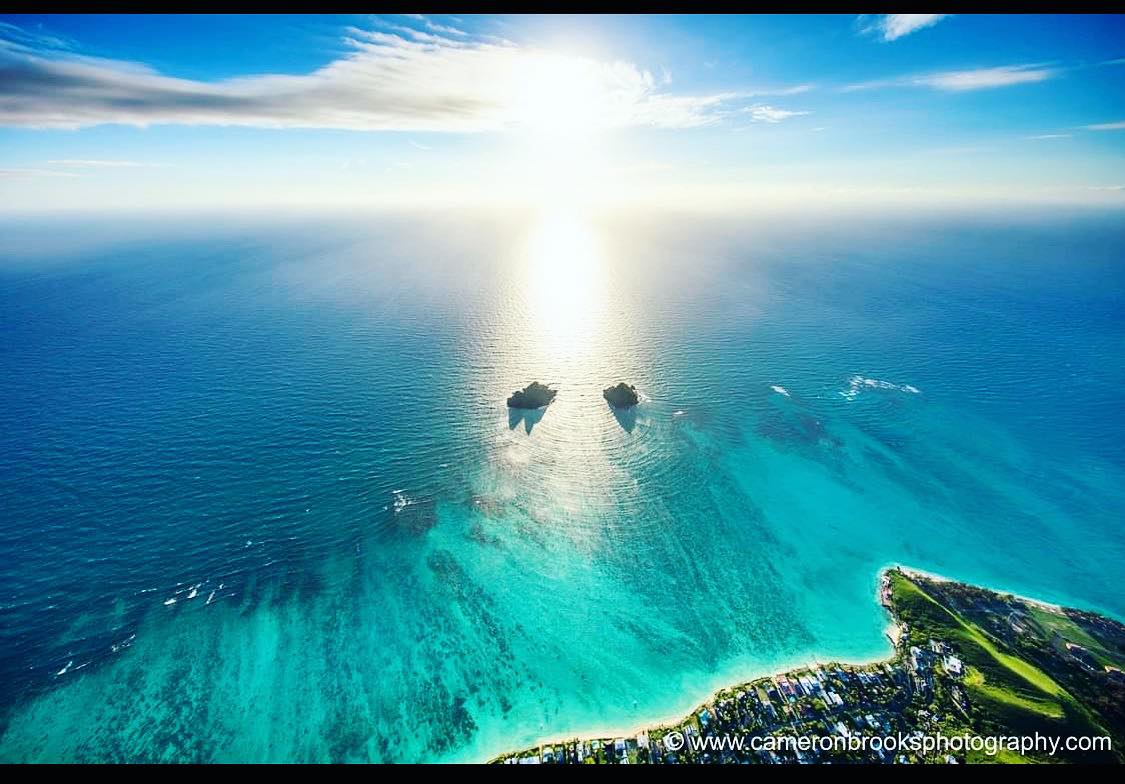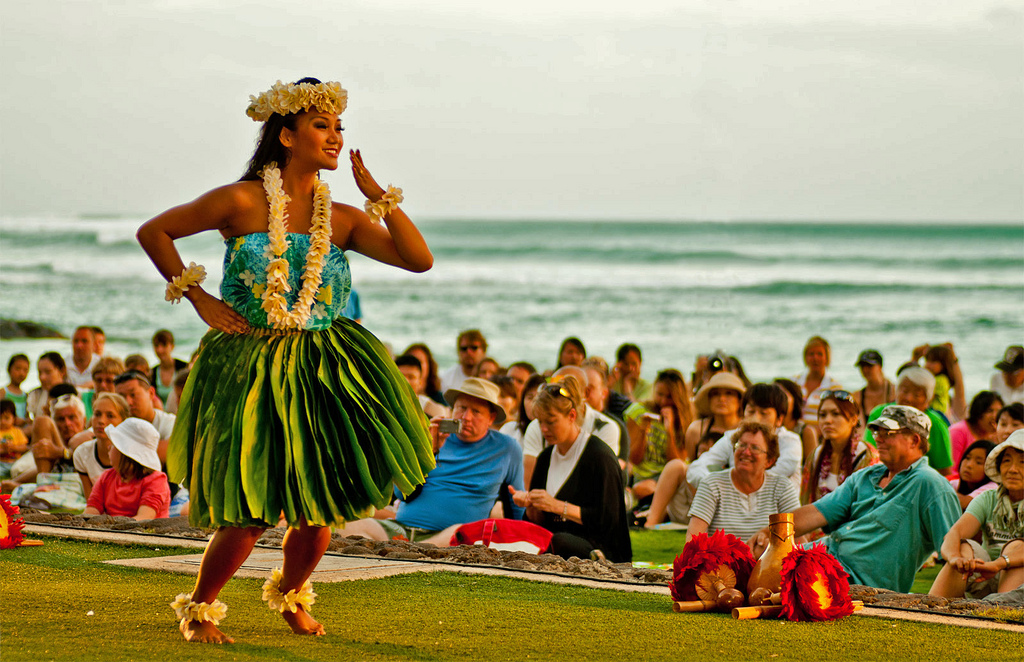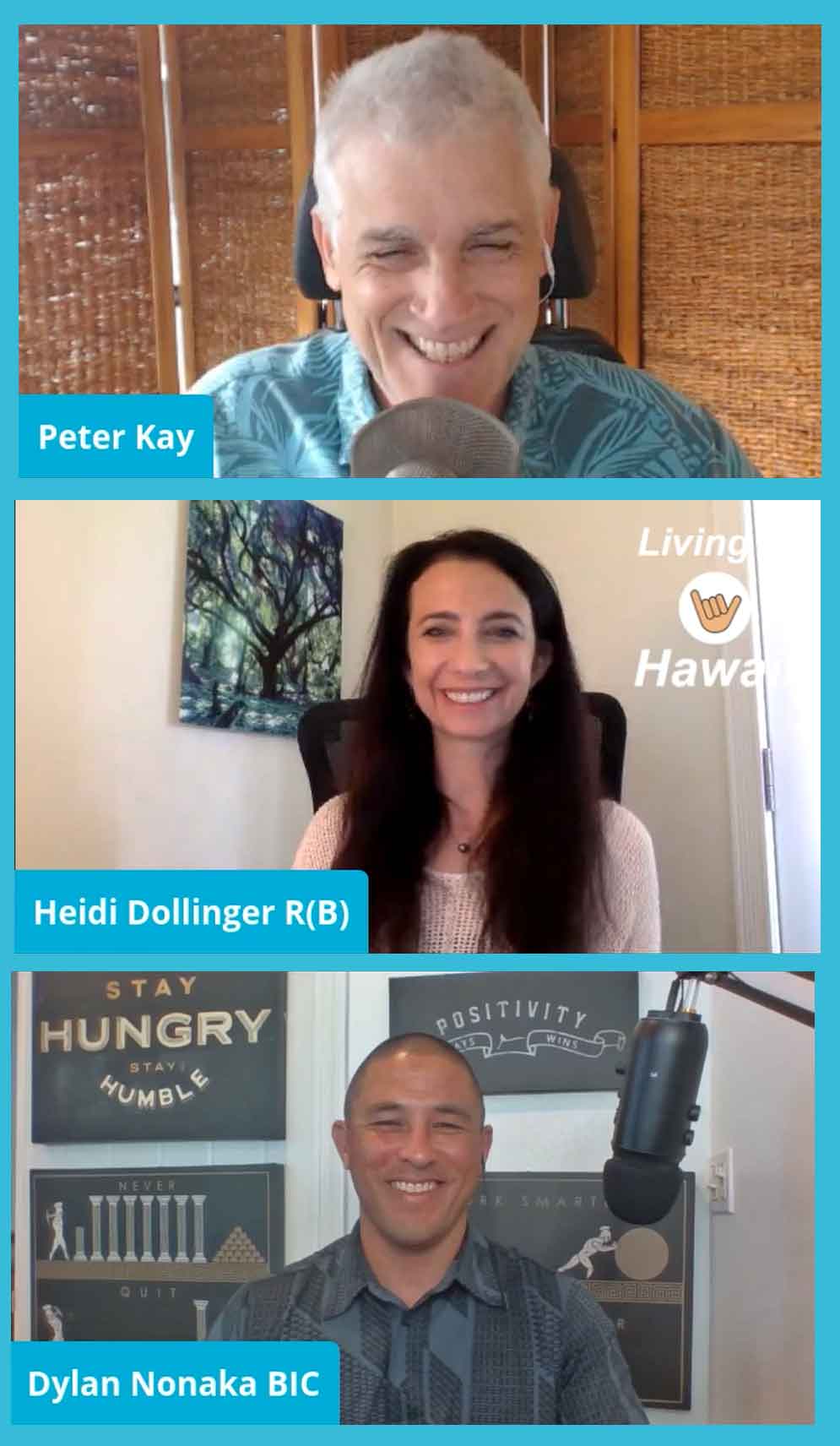Latest Content
Internet in Hawaii (2025): Spectrum vs. Hawaiian Telcom vs. Starlink
Let's talk about something that doesn't get nearly enough [...]
Ask us Anything LIVE 11/21/25 : Aloha Friday Hawaii Real Estate
Get your questions in and join us LIVE this [...]
Kaiser vs. HMSA: Health Insurance Options for New Hawaii Residents
Here's a question that doesn't get nearly enough attention [...]
The Real Guide to Living in Hawaii
Considering life in Hawaii? You’re not alone. The islands call to many people seeking a different pace and connection to nature. But let’s be real: living in Hawaii isn’t all beach days and rainbows. It’s a lifestyle shift. A financial shift. And understanding what that really means makes all the difference.
This site exists to provide honest perspective.
We cover everything from what it really costs to live in Hawaii (yes, groceries are pricey—but not everything is) to what life looks like on each island. Whether you’re researching for work, dreaming of a slower pace, or planning your future in paradise, you’ll find practical insights here.
This site brings together information from residents across Oahu, Maui, Kauai, and the Big Island. Real experiences, honest perspectives, and practical advice from people who understand island life.
Check out the cost of living breakdowns, neighborhood comparisons, and guides to help you figure out which island matches your lifestyle. This isn’t about selling a fantasy. It’s about helping you understand what island life actually involves—in one of the most beautiful places on Earth.
Ready to explore the real Hawaii? Let’s get started.
Choose Your Island

Moving to Hawaii
Plan your relocation with practical guides on shipping, housing, and everything you need to make a smooth transition to island life.
Learn More
Finding Jobs
Discover employment opportunities across the islands and tips for securing work in Hawaii's unique job market.
Learn More
Living In Hawaii
Navigate daily life on the islands with insights on neighborhoods, local culture, and the practicalities of Hawaiian living.
Learn More
Adjusting to Hawaii
Embrace the Aloha Spirit and learn about Hawaiian traditions, customs, and community values to help you feel at home.
Learn More
Vacationing in Hawaii
Planning a visit before making the move? Get insider tips on experiencing the best of what Hawaii has to offer.
Learn More
Cost of Living
Navigate Hawaii’s unique economic landscape with our Cost of Living guides. Discover practical insights on housing, groceries, utilities, and transportation across all islands.
Learn More
Is Hawaii Right For You?
Living in paradise isn't without challenges. From the higher cost of living to the "island fever" some experience, Hawaii life has unique considerations that mainland living doesn't.
Take our comprehensive quiz to help determine if relocating to Hawaii aligns with your lifestyle, budget, and expectations.
Take the Quiz30%
Higher Cost of Living Than US Average
78°F
Average Year-Round Temperature
8
Major Hawaiian Islands
1.4M
Hawaii Residents
Ready to Make the Move?
Join our newsletter for weekly insights, tips, and exclusive resources to help you navigate your journey to paradise.
Get StartedFrequently Asked Questions About Living in Hawaii
Hawaii has a laid-back lifestyle that is centered around outdoor activities, family, and community. The "Aloha spirit" is all about kindness, compassion, and respect for nature. Hawaii's cultural blend includes indigenous traditions, Asian influences, and Western customs, creating a unique heritage. Newcomers are generally welcomed, especially when they show respect for local customs and engage with the community. You'll be most at home in Hawaii when you embrace Aloha.
Yes it is, Hawaii is one of the most expensive states in the U.S. due to high costs for housing, groceries, and utilities. Living more frugally or choosing a less populated island can help manage expenses. Your reason for being in Hawaii has to outweigh the additional expense. In my opinion, it's totally worth it.
Oahu is the most popular choice for newcomers because of its urban amenities, job opportunities, and central location. Oahu offers a mix of city and suburban life, making it a practical starting point for many moving to Hawaii.
The cost of living in Hawaii is generally higher than on the mainland, mainly due to housing, food, transportation, and utility costs. Planning and budgeting carefully can help manage these expenses.
When buying or renting in Hawaii, consider location, proximity to amenities, local property taxes, and potential natural hazards. For example, in 2023, a one-bedroom apartment on Oahu averaged around $1,800 per month, while the median condo price on Oahu was approximately $480,000. Working with a local real estate agent can be beneficial, especially given Hawaii's competitive real estate market. If you're interested in learning more we can help: Find a Home in Hawaii
Finding a job in Hawaii depends on the industry. Hospitality and service positions are often available, while other sectors like healthcare and education may be more competitive. Start with online job boards, networking, and local recruiters, and be prepared to be patient. The term "It's not what you know, it's who you know" is how things work in Hawaii.
Hawaii's job market is diverse, with opportunities in tourism, healthcare, education, construction, and agriculture. Because the job market can be competitive, having relevant skills and experience can be advantageous.
Each island has its own character:
- Oahu is the most urbanized, with a vibrant city life and the highest population.
- Maui is known for its luxury resorts, beautiful beaches, and the scenic Road to Hana.
- Kauai is lush and quiet, with dramatic landscapes and a more rural feel.
- Big Island offers diverse ecosystems, including active volcanoes and black sand beaches. It is the most affordable island if you are budget conscious.
Hawaii has a tropical climate with warm temperatures year-round. The dry season is from April to October, and the wet season from November to March. Microclimates across the islands create diverse weather patterns, which vary by elevation and location.
Research the cost of living, job market, housing options, and local customs. Be prepared for a slower pace of life, close-knit communities, and a focus on nature and the outdoors.
Challenges include a high cost of living, limited job opportunities in certain sectors, distance from the mainland, and natural hazards such as hurricanes, tsunamis, and volcanic activity on The Big Island. The psychology of a completely different culture than you are probably accustomed to will prove to be the biggest challenge.
To be environmentally conscious, consider reducing water and energy usage, recycling, composting, participating in beach cleanups, and supporting local conservation efforts. Be mindful of local guidelines and regulations when enjoying outdoor activities. You'll be on an Island. It's imperative that everyone pitches in and takes care of the surroundings.
Popular Hawaiian dishes include poke, loco moco, kalua pork, spam musubi, malasadas, and shave ice. Food tends to be a fusion of Asian styles of food with western food sprinkled in here and there.
Respect sacred sites by dressing modestly, staying on designated paths, and refraining from touching or removing items. Always follow any posted guidelines. Being humbly respectful is the key.
Hawaii's islands vary greatly in landscape, from Kauai's lush rainforests to the Big Island's volcanic terrain. Each island has unique beaches, mountains, and natural attractions.
To prepare, research housing, transportation, groceries, and other expenses. Create a budget that reflects your expected income and consider ways to save or supplement your income.
The median household income in Hawaii is around $81,000, though it varies by island and occupation. The high cost of living affects income needs, so planning is essential.
Rental prices vary by location. In 2023, a one-bedroom apartment on Oahu averaged around $1,800 per month. Prices differ significantly based on the island and specific neighborhood.
Public transportation options vary by island. On Oahu, TheBus provides extensive coverage, and the Honolulu Rail Transit project is underway. On other islands, public transportation is limited, and a car may be necessary.
The military presence in Hawaii supports the local economy and provides job opportunities. However, it can contribute to traffic congestion near bases and raises concerns about land use and environmental impact. Oahu has the most noticeable military presence.
Outdoor activities include surfing, hiking, snorkeling, scuba diving, paddleboarding, kayaking, and whale watching. The culture is built around outdoor life.
Notable figures include King Kamehameha I, who united the islands, Queen Liliuokalani, the last Hawaiian monarch, and Duke Kahanamoku, an Olympic swimmer and surfing pioneer.
Hawaii has relatively low property tax rates compared to other states, but rates vary by island and property value. It's helpful to understand how local taxes might impact your overall cost of living.
Visiting local museums, cultural centers, and historical sites is a great way to learn about Hawaii's history. Books, documentaries, and local experts can also provide insights. Bishop Museum is a popular option for immersing yourself in Hawaiian culture and history. You'll have a better understanding and level of respect if you arrive with historical knowledge.
Local government websites, community organizations, and social media groups can be valuable resources for information on schools, healthcare, and other essential services. Connecting with locals can also provide recommendations and insights.
Be mindful of health concerns such as sun exposure, mosquito-borne diseases like dengue fever, and volcanic activity (Big Island), which can lead to vog (volcanic smog) after eruptions.
Interisland travel is typically by air, with Hawaiian Airlines and Southwest Airlines providing regular flights. There are also ferries between some islands, like Maui and Lanai.
To adjust to Hawaii's relaxed lifestyle, embrace the Aloha spirit by practicing patience, kindness, and respect. Enjoy outdoor activities and take time to connect with the community and culture.
- Oahu: Waikiki Beach, Pearl Harbor, Diamond Head, Hanauma Bay, and the North Shore.
- Maui: Road to Hana, Haleakala National Park, Lahaina, Kaanapali Beach, and Iao Valley State Park.
- Kauai: Na Pali Coast, Waimea Canyon, Hanalei Bay, and Wailua River.
- Big Island: Hawaii Volcanoes National Park, Mauna Kea Observatory, Akaka Falls, and Punalu'u Black Sand Beach.
Each island has distinct lifestyles and landscapes:
- Oahu: Urban amenities and job opportunities.
- Maui: Luxury resorts and remote communities.
- Kauai: Rural, nature-focused lifestyle.
- Big Island: Diverse landscapes and more affordable housing.









